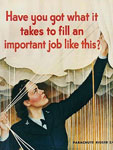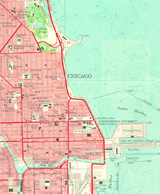Women of World War II

In 1943, at the peak of World War II, the United States military inaugurated the Women Airforce Service Pilots, or WASP, program. The program was designed to bring women pilots into the Air Force in light of the growing shortage of male pilots. More than 1,000 women served in non-combat positions, and eventually flew more than 60 million miles for the war effort. In March 2010, these women received the Congressional gold medal, among the highest civilian honors for courage, service, and dedication.
This website presents more than 250 photographs of women in the service during World War II, including 30 of the WASPs. The Women's Army Corp (WACS), Coast Guard SPARS, Navy WAVES (Women Accepted for Volunteer Emergency Service), Army nurses, and women Marines are also included. There are photographs of nine "notable women," such as Jacqueline Cochran, the founder of the WASPs program, and Lieutenant JG Harriet Ida Pickens and Ensign Frances Wills, the Navy's first African American WAVES officers.
Accompanying these photographs is a selection of close to 100 recruiting posters targeted at women. While other websites document the role of women during World War II, this website stands as one of the largest repositories of contemporary photographs of their military efforts.
